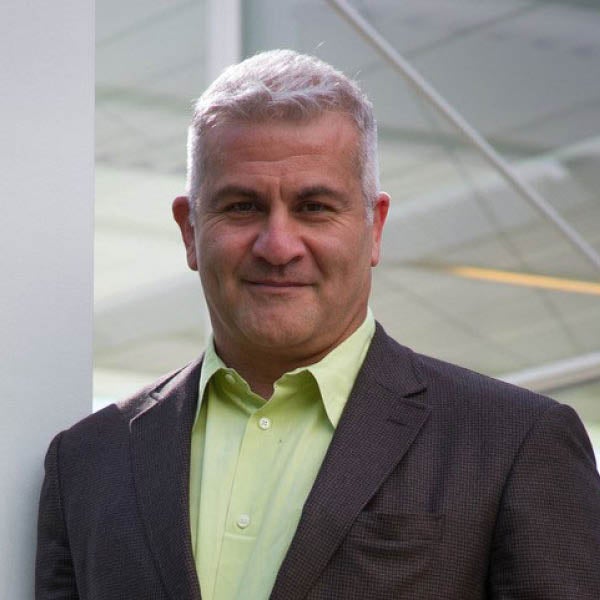On leave
Farès el-Dahdah received his undergraduate degrees in both fine arts and architecture from the Rhode Island School of Design and went on to pursue his graduate studies in urbanism and architectural theory at Harvard University's Graduate School of Design. Following a two decade long professorial track at Rice University's School of Architecture, he was appointed director of the Humanities Research Center (HRC) in 2012, Professor of the Humanities in 2014, and Professor of Art History in 2021. El-Dahdah was a Visiting Fellow at the David Rockefeller Center for Latin American Studies and at the Canadian Center for Architecture. He has written extensively on Brazil's modern architecture and has been involved in several collaborative projects with Casa de Lucio Costa and Fundação Oscar Niemeyer, two Brazilian cultural foundations on the boards of which he serves. He is currently leading a Digital Art History Grant, titled Situated Views of Rio de Janeiro: 19th and Early 20th-Century Photography and the Diluvial Houston initiative, both supported by the Getty and Andrew W. Mellon Foundations, respectively. His current research interests explore and critique how digital platforms uphold the mission of disseminating knowledge and in the Spatial Studies Lab he runs, he is creating online geospatial platforms in the areas of cultural heritage, public health, social justice, disaster response, and climate change. At Rice, el-Dahdah's activities extend across the university in his capacity as chair of the University Committee on Information Technology, a Baker Institute Faculty Scholar, and a Faculty Advisory Committee member for the Ken Kennedy Institute.
Selected Publications:
“Paisagens Fluidas e Rodoviarismo: Roberto Burle Marx e o Rio de Janeiro.” In O Tempo Completa: Burle Marx, Clássicos e Inéditos, edited by Lauro Cavalcanti, 108-129, Rio de Janeiro: Casa Roberto Marinho, 2022. [w/ Verena Andreatta]
“Fluid Landscapes and Vehicular Mobility.” In Landscape, no. 69 (2022): 98-109. [w/ Verena Andreatta]
“Relocating Brazil’s Capital Inland.” In The Oxford Research Encyclopedia of Latin American History. Ed. Guillermo Palacios. New York: Oxford University Press, 2021. DOI: 10.1093/acrefore/9780199366439.013.847
Freedmen's Town (Spatial Studies Lab, Rice University, 2021). [w/ Bruno de Castro Sousa, Uilvim Ettore Gardin Franco, Ualas Barreto Rohrer] DOI: 10.25613/TXZE-BW35
Highways Waterways (Spatial Studies Lab, Rice University, 2020). [w/ Katherine Ensor, Bruno de Castro Sousa, Uilvim Ettore Gardin Franco, Ualas Barreto Rohrer, Wilson Franca, Axis Maps] DOI: 10.25613/C6GC-H163
SARS-CoV-2 in Brazil (Spatial Studies Lab, Rice University, 2020). [w/ Bruno de Castro Sousa, Uilvim Ettore Gardin Franco, Ualas Barreto Rohrer] DOI: 10.25613/545m-6m39
levantCarta/tripoliFair (Spatial Studies Lab, Rice University, 2019). [w/ Bruno de Castro Sousa, Uilvim Ettore Gardin Franco, Ualas Barreto Rohrer] DOI: 10.25613/Q1RF-V469
pilotPlan (Spatial Studies Lab, Rice University, 2018). [w/ Bruno de Castro Sousa, Uilvim Ettore Gardin Franco, Ualas Barreto Rohrer, Axis Maps] DOI: 10.25613/A041-9T46
levantCarta (Spatial Studies Lab, Rice University, 2018). [w/ Bruno de Castro Sousa, Uilvim Ettore Gardin Franco, Ualas Barreto Rohrer, Axis Maps] DOI: 10.25613/705K-6V70
instituteRice (Spatial Studies Lab, Rice University, 2017). [w/ Bruno de Castro Sousa, Uilvim Ettore Gardin Franco, Ualas Barreto Rohrer, Melissa Kean, Axis Maps] DOI: 10.25613/ER5E-4860
Guia da Arquitetura do Rio de Janeiro. Rio de Janeiro: Bazar do Tempo, 2016. [w/ Cláudia Brack, Carlos Eduardo Comas, Cláudia Carvalho, Gustavo Rocha Peixoto, Marcos Moraes de Sá, Maria Helena Salomão, Mozart Vitor Serra]
“Paradoxical Infrastructures: Ruins, Retrofit, and Risk.” In Science, Technology & Human Values. Vol. 41, #3 (December 23, 2015): 547-565 [w/ C. Howe, J. Lockrem, H. Appel, E. Hackett, D. Boyer, R. Hall, M. Schneider-Mayerson, A. Pope, A. Gupta, E. Rodwell, A. Ballestero, T. Durbin, E. Long, and C. Mody]
“Teórico, preservacionista e arquiteto: Lucio Costa o ‘antropófago’.” In Sobre a Obra de Lucio Costa, Textos Selecionados, edited by Anna Paula Canez and Samuel Brito, 71-114. Porto Alegre: Editora UniRitter, 2015.
“Leisure and Pleasure: an interview with Farès el-Dahdah.” Brownbook: Oscar Niemeyer in Abu Dhabi, no. 1 (2015): 66-69.
“Burlesque Beds.” Macguffin: The Bed, no. 1 (2015): 128-139.
imagineRio (Spatial Studies Lab, Rice University, 2014). [w/ Alida Metcalf, Axis Maps] DOI: 10.25613/Y1A2-CM40

